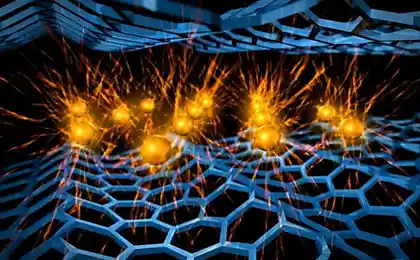718
Russian scientists discovered new effects in superconductors

Researchers at the Institute of Solid State Chemistry, Ural Branch of Russian Academy of Sciences found out what processes in complex oxygen-containing superconducting materials affect their critical temperature. The findings give impetus to the creation of new materials, which may lead to revolutionary changes in many technical fields. In the course of the study, researchers found that the transition temperature of layered systems based on iron in the state of a superconductor decreases almost two times increase in the number of oxygen vacancies (fragments of the crystal lattice with missing there, where they should be, oxygen atoms) with 37K for stoichiometric up 20K for kisloroddefitsitnyh phases.
Layered system (a class of substances with a high-temperature superconductivity) based on iron have been opened recently. Studies such superconductors have been developing very intensively. After all, scientists hope to find such materials, which would be a transition to the superconducting state at high temperatures, which will lead to revolutionary changes in many fields, from computer engineering to space.
Such materials will have lower volumes of content, and on the properties - superior to conventional superconductors. Ideally, scientists hope to get a superconductor that works at room temperature.
Of greatest interest today are complex oxygenated materials as one of the classes of compounds based on iron. In these structures, the layers of the iron compounds are separated by layers of non-metal oxides. One of the most intriguing features of superconducting materials - oxygen non-stoichiometry, ie the deviation of quantitative relationships between components of chemical compounds defined rules. We know that when you make changes to the structure of superconducting materials can affect the value of the critical temperature. The regularities of such a relationship, it will be possible to synthesize a substance with a very high critical temperatures.
By means of theoretical calculations researchers studied kisloroddefitsitnuyu ideal system to understand how it affect the structural and electronic properties of oxygen vacancies.
As a result, scientists have concluded that the structure and stability of superconductors depend on the position of the oxygen vacancies. So, if the vacancy is formed in a position that chemists call 2c, it retains the original structure of the stoichiometric crystal. Conversely, if a vacancy in the position designated by scientists as the 4f, is a violation of the original structure of the crystal lattice. Therefore, as a rule, oxygen vacancies occur in the 2s-position, since many vacancies do 4f-superconductor is very unstable.
Source: www.strf.ru
Innovation Center "Skolkovo" social networks VKontakte, Twitter, facebook and Google +
Site Facility: www.sk.ru
via factroom.ru
At the beginning of the 20th century, Dr. Duncan McDougall tried to calculate the weight of the soul
Small scratches on the vehicles can "heal" themselves























